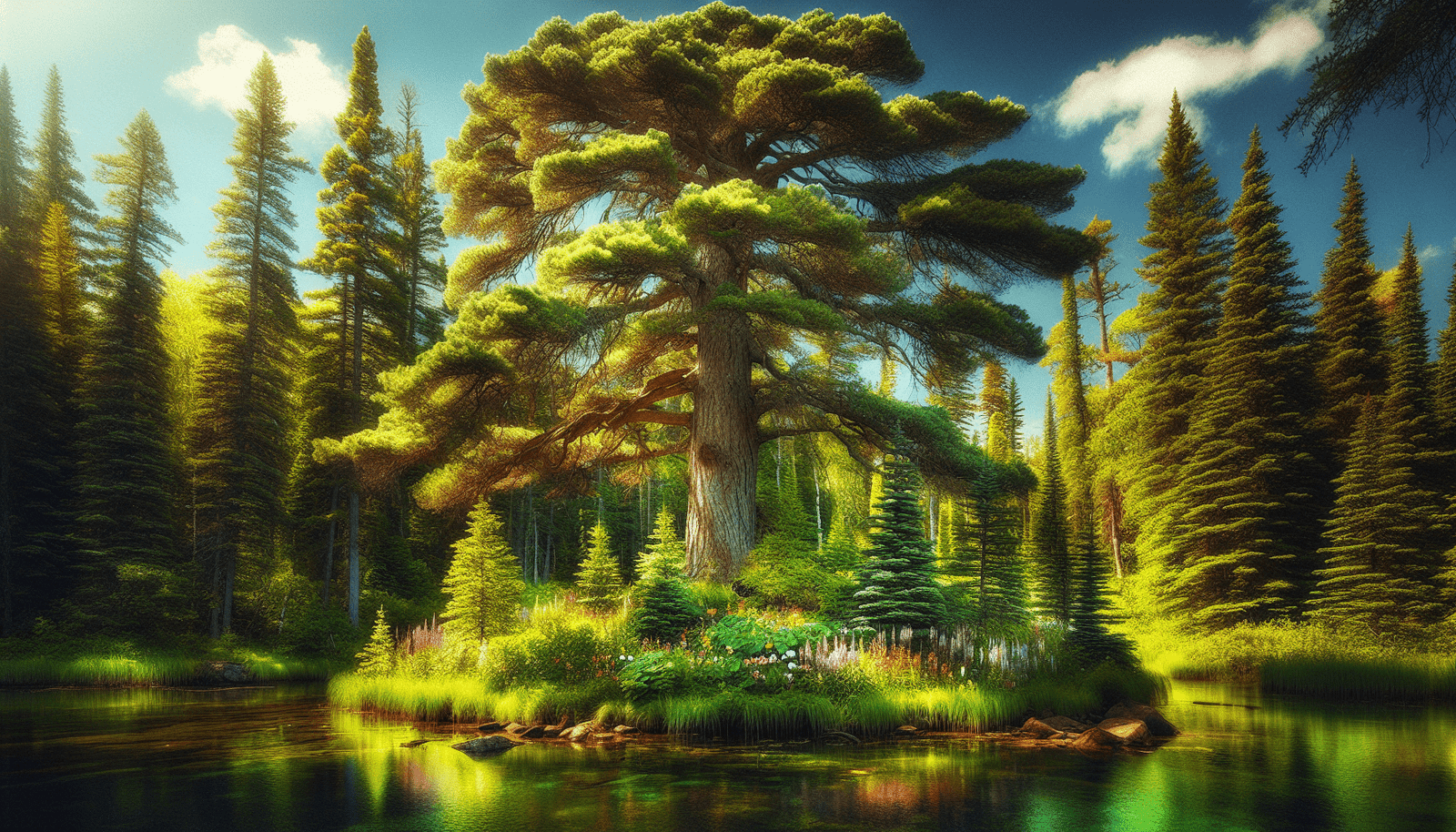Have you ever wondered what it would be like to immerse yourself in the beauty of nature, surrounded by towering trees, shimmering lakes, and abundant wildlife? If so, Superior National Forest in Minnesota may just be your next great adventure.

Overview of Superior National Forest
Located in the northeastern part of Minnesota, Superior National Forest spans over 3 million acres, making it one of the largest national forests in the United States. Established in 1909, it is renowned for its stunning landscapes, rich biodiversity, and numerous recreational opportunities. The forest’s proximity to the Boundary Waters Canoe Area Wilderness enhances its appeal, attracting outdoor enthusiasts from all over the world.
Geography and Landscape
The geography of Superior National Forest is diverse, providing a wide range of habitats. You’ll encounter everything from dense coniferous forests to vast wetlands and pristine lakes.
- Forests: The forest predominantly features northern hardwood forests, composed mainly of sugar maples, birch, and aspen.
- Lakes and Rivers: With over 450 lakes and countless rivers, you’ll find plenty of opportunities for fishing, canoeing, and kayaking.
- Mountains and Hills: The forest is gently rolling, with elevations ranging from flat wetlands to rocky ridges.
This variety in topography contributes to the many ecosystems you can find within the forest, making it home to countless species of plants and animals.
Flora and Fauna
Superior National Forest boasts a rich tapestry of plants and wildlife. You’ll be amazed at the diversity of life that calls this place home.
Plant Life
The forest features over 400 species of plants, including various trees, shrubs, and flowers. Some notable plants include:
| Plant Type | Description |
|---|---|
| Trees | Sugar maple, red pine, and northern white cedar |
| Wildflowers | Trillium, lady’s slipper, and wild geranium |
| Ferns | Maidenhair fern and bracken fern |
Wildlife
When visiting, keep your eyes peeled for the variety of wildlife that inhabits the forest. Some animals you might encounter include:
- Mammals: Wolves, black bears, moose, and white-tailed deer are some of the larger mammals you may spot.
- Birds: The forest is home to over 200 species of birds, including the common loon, bald eagle, and a variety of songbirds.
- Reptiles and Amphibians: You’ll also find a selection of turtles, snakes, frogs, and salamanders.
Being aware of the wildlife can enhance your visit and make your experience more memorable.
Recreational Activities
Superior National Forest is a playground for outdoor enthusiasts. No matter the season, you’ll find an activity that suits your interests.
Hiking
With an extensive network of trails, hiking is one of the most popular activities in the forest. Trails range from easy walks to challenging hikes, ensuring there’s something for everyone.
- Highlights: The Ely’s Peak Trail offers stunning views of Lake Superior, while the Mystery Mountain Trail leads you through beautiful forests and overlooks.
Camping
Whether you prefer a well-equipped campground or a more rustic experience, camping in Superior National Forest is a fantastic way to enjoy the outdoors.
| Campground | Features |
|---|---|
| Tettegouche State Park Campground | Located near the Baptism River, provides modern amenities |
| McKinley Lake Campground | Offers a more secluded camping experience with basic facilities |
Water Activities
With over 450 lakes, the forest provides ample opportunities for water activities. Fishing, canoeing, and kayaking are just the beginning.
-
Fishing: The lakes are teeming with fish, including walleye, northern pike, and bass. Be sure to check local fishing regulations before heading out.
-
Canoeing and Kayaking: The Boundary Waters Canoe Area Wilderness offers a unique opportunity to paddle through pristine wilderness.
Winter Sports
When winter arrives, the forest transforms into a winter wonderland. Activities like snowshoeing, cross-country skiing, and snowmobiling become the norm.
-
Snowshoeing & Skiing: With trails specifically designated for skiing and many paths perfect for snowshoeing, the forest is a perfect winter escape.
-
Snowmobiling: Trails provide thrilling routes that let you explore the winter landscape.
Cultural Significance
Superior National Forest has rich cultural heritage, with areas that hold historical significance.
Native American History
The forest has long been home to indigenous peoples, including the Ojibwe. Their rich culture and traditions revolve around the natural landscape, emphasizing the importance of conservation and respect for the land. If you’re interested, look for opportunities to learn about the local tribes during your visit.
Historic Sites
Within the forest, there are several historic sites worth visiting, including:
- The Sivertson’s Cabin: A historic trapper’s cabin offering a glimpse into the lives of early settlers.
- The Old Gunflint Trail: This historic route offers a look at the early days of transportation and development in the region.

Conservation Efforts
The forest is not just a recreational area; it is also a vital ecosystem that requires protection. Conservation efforts are crucial to maintaining its beauty and ecological balance.
Forest Management
Management practices help ensure the sustainability of the forest. These efforts focus on:
- Wildlife Habitat Preservation: Protecting the habitats of various species is paramount.
- Forest Health Monitoring: Regular assessments help identify and address any concerns related to pests, diseases, or invasive species.
Community Involvement
Local communities are intricately involved in conservation efforts. Volunteer opportunities allow you to contribute directly to the preservation of this stunning environment.
Visiting Superior National Forest
If you’re ready to visit Superior National Forest, there are a few things you should keep in mind to make your trip enjoyable.
Best Time to Visit
While the forest is beautiful year-round, consider the following for your visit:
- Spring (April – June): Ideal for blooming wildflowers and mild weather. Great for hiking and exploring.
- Summer (July – August): Perfect for water activities and camping, but be sure to book in advance as campsites fill up quickly.
- Fall (September – October): The fall foliage is breathtaking, making it a great time for hiking and photography.
- Winter (December – February): Embrace the snowfall with winter sports, but remember to dress warmly!
Getting There
Superior National Forest is accessible by car, and it’s surrounded by a network of highways. Depending on where you are coming from, several routes can lead you to this beautiful destination.
Safety Tips
While enjoying the great outdoors, keeping safety in mind is essential:
- Wildlife Caution: Always respect wildlife from a distance. Never attempt to feed or approach animals.
- Leave No Trace: Follow the seven principles of Leave No Trace to minimize your impact on the environment.
- Weather Preparedness: Be prepared for sudden weather changes, carrying the necessary gear and clothing based on the season you visit.
Unique Features
What really sets Superior National Forest apart are its unique features that create unforgettable experiences.
Scenic Byways
One of the best ways to see the forest is by driving along its scenic byways. These routes offer breathtaking views of the landscape and opportunities for pull-offs to take photos.
- Gunflint Trail: A picturesque road that meanders through forests and beside lakes, offering stunning views and access to numerous hiking and camping spots.
The Boundary Waters Canoe Area Wilderness
Adjacent to Superior National Forest, the Boundary Waters Canoe Area Wilderness is a must-see. Here you can enjoy canoeing, fishing, and the serene beauty of untouched wilderness.
- Permits Required: If you plan to enter the Boundary Waters, remember to acquire a permit beforehand as entry points are regulated to preserve its natural beauty.
Conclusion
With its breathtaking landscapes, diverse ecosystems, and myriad recreational opportunities, Superior National Forest in Minnesota stands as a fantastic destination for nature lovers and outdoor enthusiasts alike. Whether you’re hiking its scenic trails, paddling in serene waters, or simply soaking up the tranquility, you’re bound to create unforgettable memories in this remarkable national forest. So why not plan a trip today and experience the wonders of Superior National Forest for yourself?

